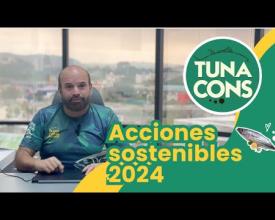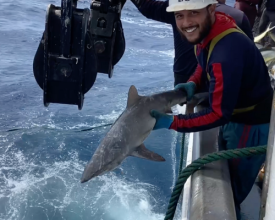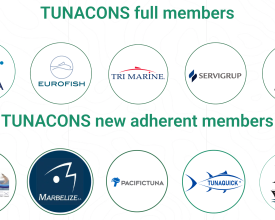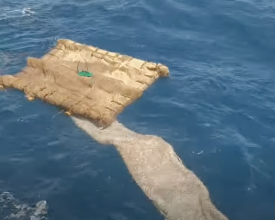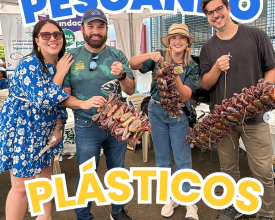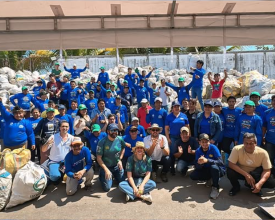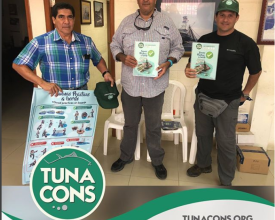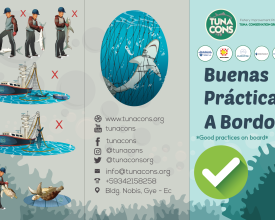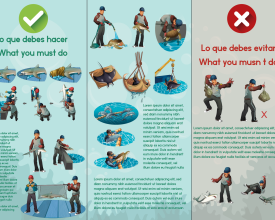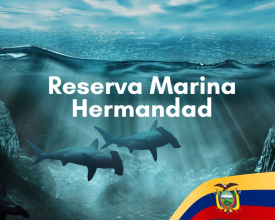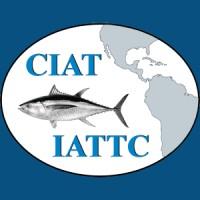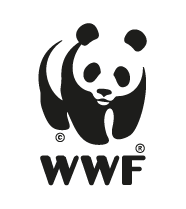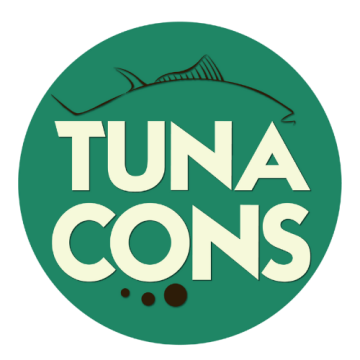
GOOD PRACTICES FOR THE HANDLING AND RELEASE OF SENSITIVE SPECIES INTERACTING WITH THE TUNA PURSE SEINE FISHERY

In 2016, three fishing companies carried out a pre-assessment to establish a Marine Stewardship Council program. In 2017, two more joined, launching the Fishery Improvement Project toward MSC certification. Member companies, including NIRSA, Jadran Group, Servigrup, Eurofish, Tri Marine, Marbelize, Manacripex, Pacifictuna, and Tunaquick, have worked with the support of the Ecuadorian government and WWF to improve fishery management and reduce environmental impact.
TUNACONS promotes sustainable fishing in the Eastern Pacific by optimizing tuna yields through scientific research. It also trains the sector and supports the reduction of ecosystem impacts.
Since October 2017, a code of good practices for handling and releasing bycatch has been implemented, aimed at captains and crew. Key actions include:
– 59 vessels recording data on bycatch reduction and incidental catches
– Collaboration in a manta ray tagging program
– Training sessions on IATTC resolutions, sensitive species handling, and external evaluations.
Context
Challenges addressed
Fisheries sustainability: Fisheries sustainability: Includes implementing conservation measures to avoid overfishing of tropical tunas, the need for responsible fishing practices, and proper management of fish stocks.
Ecological impact and bycatch: Refers to bycatch of non-target species and the negative effects of traditional FADs on marine ecosystems.
Education and training: Lack of knowledge and training among fishers on sustainable practices and proper management of FADs, which limits the adoption of more responsible methods.
Location
Process
Summary of the process
The building blocks interact synergistically to achieve sustainable fisheries management, addressing challenges holistically while promoting ecosystem resilience. The development of biodegradable FADs is reinforced with monitoring and data collection protocols that measure their effectiveness in reducing bycatch and impacts. Training and sensitization of fishermen ensure understanding of sustainable FAD use and monitoring compliance, fostering a culture of responsibility. Multi-sector collaboration enhances implementation, bringing together fishers, NGOs, and other actors to share knowledge and resources. Ecological models and impact assessments provide scientific data to guide adaptive management and the application of codes of good practice. Finally, participatory management engages fishing communities in the process, ensuring greater commitment to sustainability. This cycle of innovation, science, and collaboration creates continuous improvement that benefits both marine ecosystems and local communities.
Building Blocks
Cooperation with tuna stock assessment models
The purpose is to collect and deliver key scientific information to support the monitoring of tropical tuna populations in the Eastern Tropical Pacific, under the standards established by the Inter-American Tropical Tuna Commission (IATTC). Through this cooperation, consistent data on the three main species caught -yellowfin tuna, skipjack tuna, and bigeye tuna- are generated to improve the population models used by the IATTC to assess the health status of these species. Its operation is based on the continuous and standardized collection of fisheries data, which are then delivered to the IATTC to strengthen its scientific research plans and facilitate informed decision-making in the sustainable management of tuna fisheries in the region.
Enabling factors
- Willingness to support IATTC scientific research plans by providing data to improve assessment models that estimate the health status of tropical tuna stocks.
Lesson learned
- Data from key fisheries for a commercial fishing strategy are kept confidential but for a period of time in order to contribute to scientific and fisheries management work.
Development of biodegradable and non-meshing Fish aggregating devices (FADs)
It focuses on the innovation and adoption of biodegradable fish aggregating devices, known as EcoFADs, with the aim of reducing bycatch and minimizing the environmental impact of tuna fishing. Since 2017, more than 500 prototypes made from plant fibers such as abaca, which have demonstrated durability of up to 12 months in marine conditions, have been developed and tested. This approach has enabled the replacement of traditional FADs with EcoFADs, with a goal of 20% of member vessels using these biodegradable devices. In addition, TUNACONS collaborates with local communities in the production of these materials, strengthening their economy. Results show that catches remain similar to those obtained with synthetic materials, while reducing marine pollution and the risk of entanglement for non-target species.
Enabling factors
1) Involvement of shipowners
2) Research on biodegradable materials
3) Research budget
4) Training
5) Cooperation with CIAT and other organizations
6) Increasing the size of trials
7) Support for regulations in the OROP
Lesson learned
1) Collaboration of captains and crew members in at-sea trials is important.
2) Search for materials resistant to ocean conditions and consistency.
3) Controlling the quality of prototypes.
4) Protecting intellectual property.
Resources
Strengthen on-board monitoring in 100% of the fleet and Data Collection throughout the fleet
It focuses on strengthening the collection of scientific data aboard vessels to improve sustainable fisheries management. Implemented since 2018 as a voluntary program in both larger and smaller fleets, this effort also includes species tagging and monitoring activities in collaboration with the IATTC. As part of the technical strengthening, a specialized manual for onboard observers was developed, with emphasis on accurate species identification and standardized data collection techniques; to date, 21 observers have been trained under this protocol, also supporting compliance with MSC certification. In addition, it is complemented using satellite surveillance technology provided by Global Fishing Watch, which reinforces sustainability and transparency in fishing operations.
Enabling factors
Follow IATTC technical standards for data collection on catch of target species with onboard observer program on the dynamics of the smaller fleet, bycatch and ecosystem impacts.
Lesson learned
1) Coordinate with captains and crew members.
2) To cooperate with scientific research works.
3) Apply best practices
4) Manage database for more efficient reporting.
Participatory Management, Training and Awareness
It is promoted with the aim of strengthening good practices on board and reducing negative impacts on non-target species. Since 2018, with the support of organizations such as WWF, workshops have been organized for captains and crew members - reaching more than 1,510 people - where key topics such as national regulations, IUU fishing, fishing sanctions, electronic monitoring, traceability, data collection on board, among others, are addressed. These spaces update technical knowledge and allow for direct dialogue with fishermen, fostering the co-creation of solutions. An outstanding example is the design and implementation of an excluder grid for the efficient return of mobulas caught incidentally, which has reduced release time and improved their survival.
Enabling factors
Involve the participation and knowledge of vessel owners, fleet managers, captains and crew members in management and conservation strategies, sustainable practices, management of vulnerable species and information for science.
Lesson learned
1) Implement appropriate language for training activities.
2) Use practical materials
3) Disseminate their actions on the water.
Multisectoral Collaboration
The purpose is to improve the efficiency and sustainability of fishing activities in the region. A memorandum of understanding with the Galapagos National Park implements the “Caring for Galapagos” initiative, which consists of three lines of action: recovery of EcoFADs, coastal and underwater cleanup activities, and fishery improvement projects. These lines of action are worked in coordination with artisanal fishermen to strengthen the sustainability of their activities. The company also works with Bureo (Net Positiva) in the collection of unused nets: the nets are recycled and, in exchange, an economic compensation is received that is destined for sustainable projects that include communities such as Manta and Posorja. Initiatives such as “Pescando Plásticos”, developed together with FENACOPEC, allow these funds to be channeled towards activities that combine marine conservation and local development.
Enabling factors
Generating alliances between fishing organizations, governments, NGOs and industry to encourage participation and commitment to sustainable management.
Lesson learned
Build credibility based on results to achieve effective technical cooperation.
Implementation of Codes of Good Practice
A visual and practical guide has been developed, with clear illustrations and little text, designed to facilitate the correct release of non-target species, reduce the risk of infractions, and promote the well-being of both crew members and marine fauna. This tool is constantly updated based on new learning and technical advances, ensuring that fleets have current and accessible information. Its operation is based on continuous training, technical support, and the integration of these practices into the daily routine of fishing operations, thus contributing to the conservation of marine ecosystems and compliance with international standards.
Enabling factors
Design specialized codes that guide captains and crew of fishing fleets in adopting responsible and sustainable practices.
Lesson learned
1) The support and experience of fishermen is important.
2) Implementation takes time
3) Always disseminate crew members' actions.
Resources
Cooperation for the conservation of marine protected areas.
Multisectoral cooperation is promoted for the conservation of marine protected areas, including actions to reduce marine pollution and unsustainable fishing, with a special focus on the Galapagos National Park and the Hermandad Marine Reserve. In 2025, TUNACONS reaffirmed its commitment to protect marine migratory routes and promote sustainable fishing in these key areas, also integrating academia and organizations such as Fundación Jocotoco in conservation actions. Awareness campaigns have been developed to broaden the connection and sense of belonging of diverse communities to these marine areas, transforming distant perceptions into an active commitment to their protection.
Enabling factors
Define actions to reduce negative effects of marine pollution and cooperate with processes for sustainable fishing practices within MPAs.
Lesson learned
Building processes in cooperation with local fisheries organizations requires time and expertise in fisheries.
Impacts
The management of the tuna fishery in the Eastern Pacific Ocean has been positively evaluated. The harvest strategy is achieving its objectives, maintaining tuna populations at sustainable levels, and responding appropriately to stock conditions. The environmental impact has been positive, with a decrease in non-target species mortality and an increase in the biomass of certain tuna and shark species. However, some negative impacts have been reported, such as a decline in the mean trophic level of catches, suggesting changes in the ecosystem structure. Socioeconomically, conservation measures have benefited fishing communities by ensuring the long-term sustainability of resources.
New alternatives are being considered, such as reducing fishing effort on floating fish aggregating devices (FADs) by at least 50%, with the goal of restoring ecosystem structure to a pre-industrial state within 10 years. Impact indicators include the biomass of target species, mortality of non-target species, and the mean trophic level of catches. The evidence comes from stock assessments and ecological models that show changes in biomass and ecosystem structure.
Information has been gathered through observer programs and stock assessments, as well as through workshops and stakeholder consultations to obtain qualitative insights on the effectiveness of management practices.
Beneficiaries
Beneficiaries include the fishing chain—fleet, processing, ecosystems, and consumers. Benefits appear short term by reducing bycatch, medium term through sustainable fisheries, and long term by protecting biodiversity.
Global Biodiversity Framework (GBF)
Sustainable Development Goals
Story
At the heart of responsible fishing, TUNACONS has achieved something that goes beyond catching sustainable tuna: it has planted a new mentality in fishing communities and reactivated their link with the sea, even miles away from the coast.
Thanks to its work with ecoFADs - fishing devices designed to reduce environmental impact - TUNACONS has managed to involve populations that previously did not participate directly in fishing activities. Today, communities collaborate in the construction of these ecological devices. This innovation has not only invigorated the local economy but has also strengthened a collective sense of marine protection.
An even more profound change has occurred in the thinking of the boat captains themselves. Before, releasing turtles, sharks or rays was not a priority for the crew members. Today, thanks to technical support and constant efforts to raise awareness, a real commitment to conservation has been sown.
One of the symbols of this change is Adrián Bartolomé, a captain who wears his wetsuit on every trip and does not hesitate to lead the liberation of the species. He is not alone: many of his colleagues have adopted this good practice. What used to be fear, today is commitment.
This shows that when there is will, innovation and commitment, it is possible to transform practices, regain the trust of communities, and protect marine life.
